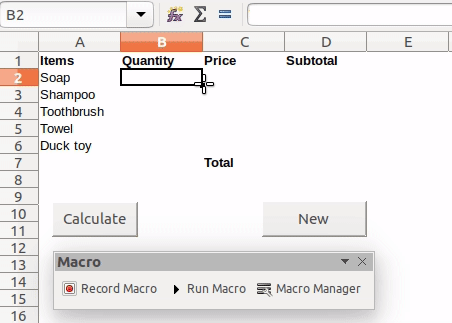

If there is no matching result, or several ones without a subtotal for them, an error is returned. If the pivot table contains only a single result value that fulfills all of the constraints, or a subtotal result that summarizes all matching values, that result is returned. Item n is the name of an item from that field. Field n is the name of a field from the pivot table. Otherwise, each pair adds a constraint that the result must satisfy. If no Field n / Item n pairs are given, the grand total is returned. If the cell range contains several pivot tables, the table that was created last is used.

Pivot table is a reference to a cell or cell range that is positioned within a pivot table or contains a pivot table. The string can be the name of the source column, or the data field name as shown in the table (like "Sum - Sales"). TargetField is a string that selects one of the pivot table's data fields. Multiple ranges can be entered using the semicolon ( ) as divider, but this gets automatically converted to the tilde (~) operator. If you state multiple ranges, you must enclose them into additional parentheses. A range can consist of contiguous cells or a single cell. Returns the number of individual ranges that belong to a multiple range. The result is the absolute value of the cell reference specified in B2, which in this case is 6. If the formula above is in cell B2 of current sheet, and the cell A1 in sheet 2 contains the value -6, you can refer indirectly to the referenced cell using a function in B2 by entering =ABS(INDIRECT(B2)).

=ADDRESS(1 1 2 "Sheet2") returns the following: Sheet2.A$1 If this parameter is absent or set to another value than 0, the A1 notation is used. Row represents the row number for the cell referenceĬolumn represents the column number for the cell reference (the number, not the letter)Ģ: row reference type is absolute column reference is relative (A$1)ģ: row (relative) column (absolute) ($A1)Ī1 (optional) - if set to 0, the R1C1 notation is used. When storing a document in ODF 1.0/1.1 format, if ADDRESS functions have a fourth parameter, that parameter will be removed. A new fourth parameter with the value 1 will be inserted. When opening documents from ODF 1.0/1.1 format, the ADDRESS functions that show a sheet name as the fourth parameter will shift that sheet name to become the fifth parameter. Both functions still use the dot '.' sheet name separator with A1 notation. In case of R1C1 notation, ADDRESS returns address strings using the exclamation mark '!' as the sheet name separator, and INDIRECT expects the exclamation mark as sheet name separator. If the argument is not given or has a value other than 0, then the A1 notation is used. In both functions, if the argument is inserted with the value 0, then the R1C1 notation is used. In INDIRECT, the parameter is appended as the second parameter. In ADDRESS, the parameter is inserted as the fourth parameter, shifting the optional sheet name parameter to the fifth position. You can also specify the name of the sheet.įor interoperability the ADDRESS and INDIRECT functions support an optional parameter to specify whether the R1C1 address notation instead of the usual A1 notation should be used. You can determine whether the address is interpreted as an absolute address (for example, $A$1) or as a relative address (as A1) or in a mixed form (A$1 or $A1). Returns a cell address (reference) as text, according to the specified row and column numbers. A starting with the letter B.Returns a number representing a specific Error type, or the error value #N/A, if there is no error. Criteria Typeįind number or number and text depending on the data type in cell B3. Examples of search criteria for the COUNTIF and SUMIF functions. For each cell in the search range that matches the search criteria, the corresponding cell in the sum range is added into the sum. The third and final argument for SUMIF specifies the range to sum. The first two arguments for SUMIF serve the same purpose as the arguments for COUNTIF the range that contains the cells to search and the search criteria. Table 7 illustrates different search criteria using the COUNTIF function referencing the data shown in Table 1. The first argument to COUNTIF specifies the range to search and second argument is the search criteria. The COUNTIF function counts the number of cells in a range that match specified criteria. The search criteria can be contained in a referenced cell or it can be included directly in the function call. The search criteria can be a number, expression, text string, or even a regular expression. The COUNTIF and SUMIF functions calculate their values based on search criteria. Count and sum cells that match conditions: COUNTIF and SUMIF


 0 kommentar(er)
0 kommentar(er)
